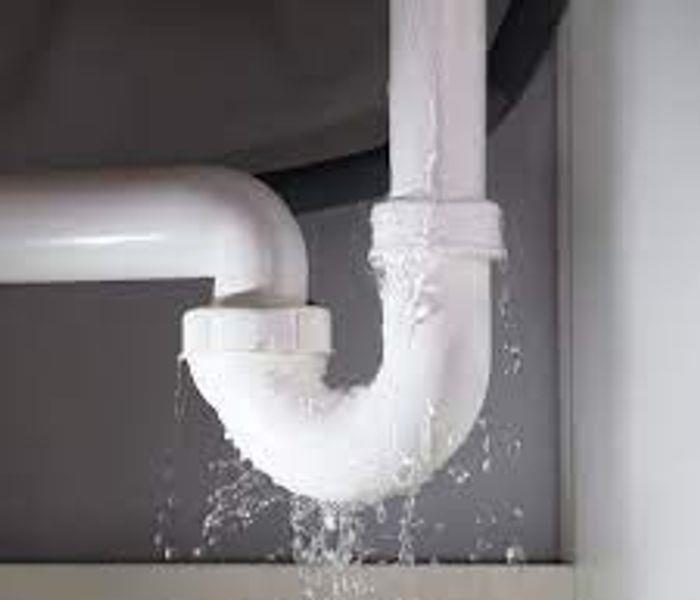Find a Plumbing Leak
9/7/2021 (Permalink)
 Learn to detect sneaky leaks inside your home and on your property to prevent water damage and waste.
Learn to detect sneaky leaks inside your home and on your property to prevent water damage and waste.
Plumbing leaks, unfortunately, are pretty common, even in newer houses, and it’s likely that every house will suffer from at least one. What’s more, not all leaks are obvious; in fact, they can be awfully insidious, making it crucial to catch and repair a leak as soon as possible. Every homeowner should know how to find a water leak.
Monitor the Water Bill
Monthly water bills are fairly predictable, so if you receive one that’s unusually high—and you haven’t been using excess water—you may have a leak. The EPA suggests that a family of four will typically use no more than 12,000 gallons per month, except perhaps during the summer if you water a garden or lawn. Even small leaks, such as a faucet with a steady drip, can waste as much as 10,000 gallons of water per year, so keeping an eye on your water bill is a smart, proactive practice.
If you suspect a leak, monitoring your home’s water meter will give you a definitive answer. The meter is often located beneath a manhole-type cover near the street or (in areas where temperatures don’t dip below freezing) on the side or back of the house, near to where the water supply line enters the house. Follow these steps to monitor the meter:
- Turn off all water faucets in your home and make sure the washing machine and dishwasher are not running.
- Check the water meter and make a note of the numbers you see. Come back in an hour and check again. If the numbers have changed, there’s a leak somewhere.
- To determine if the water leak is in the house or outdoors (only for homes with meters located at the street), turn off the shut-off valve on your home’s main water supply pipe. This is either located in a basement or a utility room where the water pipe enters the home.
- Check the water meter, write down the numbers, and wait another hour. When you check again, if the numbers have not changed, the water leak is inside your home. If the numbers have changed, the leak is in the buried water line that runs to the house.
Everyone wants a lush lawn, but if an area in your yard is much greener (and grows faster) than the rest of the grass, it could indicate the spot where a buried water line is leaking. If the leak is profuse, you might even see some puddles on the surface of the ground.
If the water meter test indicates a leak inside your home, check the cabinets under the kitchen, laundry, and bathroom sinks to make sure they’re dry. You’ll also want to look for puddles around the bases of tubs, toilets, and showers and beneath the water heater, dishwasher, and clothes washer. If you find any puddles, turn off the water supply valve to that appliance or fixture and call a plumber.
ADVERTISEMENTIf a fitting on a supply line under your sink breaks and a spray of water comes shooting out, you know immediately where the trouble is, but some leaks are a lot sneakier! At worst, water may be trickling slowly from pipe fittings within a wall and go unnoticed and it can cause extensive damage. Even if the water meter test indicates that you don’t currently have a leak, one could develop at any point in the future, so it’s a good idea to keep an eye out for:
- Wall discoloration. This could indicate water leaking from behind the drywall and soaking through to the front side. Water stains on ceilings and walls are usually yellowish or brownish in color.
- Bubbling paint or bulging wallpaper. Both are signs that the wallboard is wet and the paint or wallpaper is no longerattached tightly. In some cases, you may also notice a bulge in the wallboard, which indicates the water damage is more extensive and the wallboard will have to be replaced.
- A dripping sound. While some leaks are totally silent—for instance, if water is traveling along a wall stud—other leaks can sometimes be heard, giving you a clue as to the leak’s location.
- A musty smell. Over time, a persistent leak provides the perfect humid environment for mold to grow. In some cases, you may notice black splotches on the outside of the wall, but often, mold will grow inside the wall where you can’t see it, so a musty smell is a red flag.
All of the above are signs of a leak, but keep in mind that not all water leaks are plumbing leaks. The water could also be coming from a leak in the roof or around a window. Either way, leaks should be addressed promptly to reduce the risk of water damage.





 24/7 Emergency Service
24/7 Emergency Service